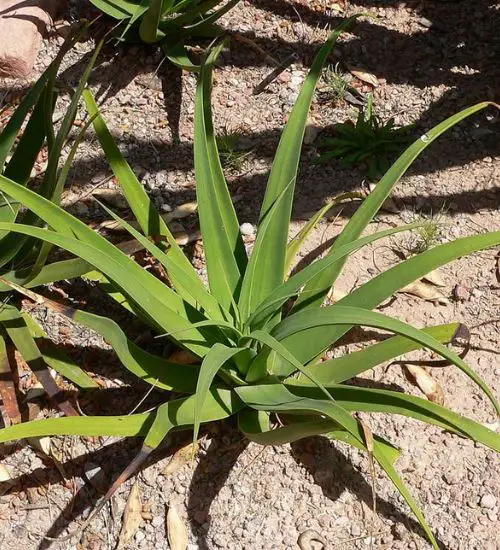Sun: Full sun to light shade
Water: More water than a typical succulent
Temperature: Zone 7a from 0° F to 5° F (-17.8 ° C to -15° C) to Zone 11b from 45° F to 50° F (7.2° C to 10° C)
Winter Survival: Cold hardy
Propagation: seeds
Flower: in the summer
Flower Type: Yellow
Toxic: Can be toxic to humans and animals
Dormant: winter
Space Requirement: Indoors & Outdoors
Common Problems: Plants may rot if overwatered, sunburn, pests
Where to buy Agave bracteosa?
Basc Care for Agave bracteosa
Watering
Watering for Agave bracteosa is a simple task. It requires More water than a typical succulent.
One simple tip for you is that you can use some online apps to check the soil status before you go water your succulents. I would recommend the ThePlantsCheck app, it has some nice features there.
Fertilizing
Only feed this succulent during its active growing seasons which means no information. Use the right fertilizer applied in the right amounts. Applying half-strength balanced fertilizer every month or so is recommended for optimal results.
Do not fertilize during winter as the plant is dormant.
Sun & Location Requirements for "spider agave, squid agave"
Agave bracteosa thrives in full sun to light shade. This means that it should be exposed to direct sunlight for most of the day for optimal growth and health. Make sure your succulent is placed in a spot where it will receive no more than 5 hours of shade each day.
As per this succulent profile, it is only able to stay healthy when the environment temperature is above the range of zone 7a from 0° F to 5° F (-17.8 ° C to -15° C).
Agave bracteosa is known for its cold hardiness and ability to survive in frigid winter temperatures. This succulent's thick leaves and stems help it retain moisture, aiding it in surviving freezing temperatures. Additionally, the succulent's attractive foliage offers a festive touch to any garden in cold climates. With its ability to survive down to 0°F, "spider agave, squid agave" is an excellent choice for areas with frosty winters.
Any succulents in the group will need a medium space to grow. You can place your pot at your table or window. Since this plant needs more space than mini succulents, you should consider do not plant them together with other succulents/plants.
Agave bracteosa also benefits from some indirect light throughout the day as well, so make sure you give it enough space to soak up light without becoming too exposed to heat.
Propagation
Toxicity

Agave bracteosa can be toxic when ingested. All parts of the plant, such as stems, leaves and flowers, are potentially dangerous and can cause severe reactions in humans and animals when consumed. It is important to stay aware of potential dangers and avoid contact with the succulent if possible.
Pests and Diseases
Agave bracteosa can be affected common pests and diseases like most of the other succulents such as snails, scale insects, and Snout weevil.
If you do spot any of pest signs, you can treat your succulent using below methods.
- Snails: clean infected plants, soapy water.
- Scale insects: quarantine, clean infected plants, soapy water.
- Snout weevil: apply the systemic insecticide two or three times a year.
Besides that, to prevent serious health issues from happening, keep your succulent in a well-ventilated area and check it regularly for any signs of pests or health problems.


